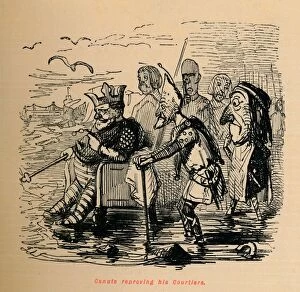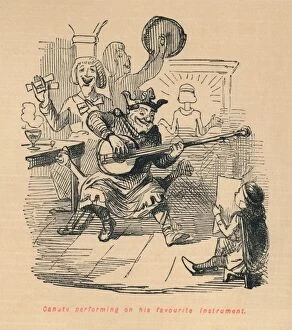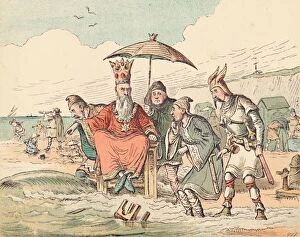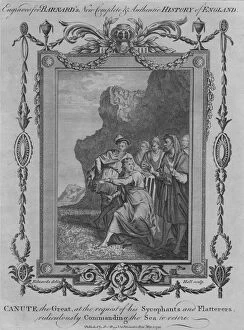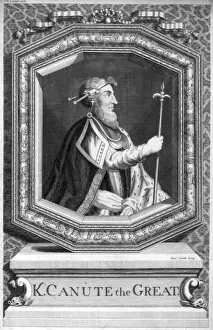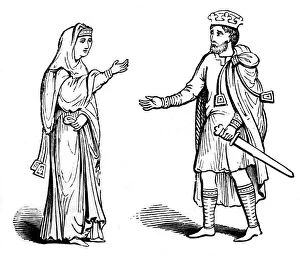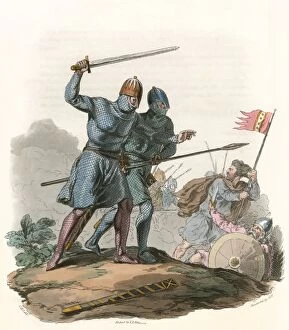Cnut Collection (#2)
"King Canute (Cnut): A Powerful Ruler and His Enduring Legacy" In the annals of history
For sale as Licensed Images
Choose your image, Select your licence and Download the media
"King Canute (Cnut): A Powerful Ruler and His Enduring Legacy" In the annals of history, King Canute (Cnut) stands as an emblematic figure whose reign left an indelible mark. Depicted in various illustrations and events, his story continues to captivate our imagination. One such illustration portrays Canute reproving his courtiers, engraved by G. Noble underlining his wisdom and humility. This scene showcases a king who understood the limits of his power and sought to teach a valuable lesson about human arrogance. Another significant event etched in history is the death of Siward, Earl of Northumberland. It serves as a reminder that even great rulers like Cnut faced challenges within their realms but managed to navigate through them with tact and diplomacy. The coffin of one of Cnut's daughters at Bosham Church offers us a glimpse into the personal side of this monarch's life. It reminds us that behind every powerful ruler lies familial ties and emotions that shape their character. George Vertue's depiction titled "King Canute the Dane" further immortalizes this legendary figure, showcasing him as both formidable and enigmatic—a leader whose influence extended far beyond his time. The meeting between Edmund Ironside and Canute on the Isle of Alney speaks volumes about Cnut's ability to negotiate peace amidst conflict—an attribute often overlooked when discussing conquerors from ancient times. Perhaps one of the most famous tales associated with King Cnut is his attempt to halt the incoming tide—an act meant to demonstrate that no mortal has absolute control over nature itself. This anecdote symbolizes not only Cnut's wisdom but also serves as a timeless metaphor for human limitations in face of natural forces. From Italy during 1050 AD to dominions stretching across vast territories, including England, Denmark, Norway, Sweden—Canute The Great held immense power during his rule. Color lithographs depicting these dominions and his reign remind us of the vastness of his empire.


